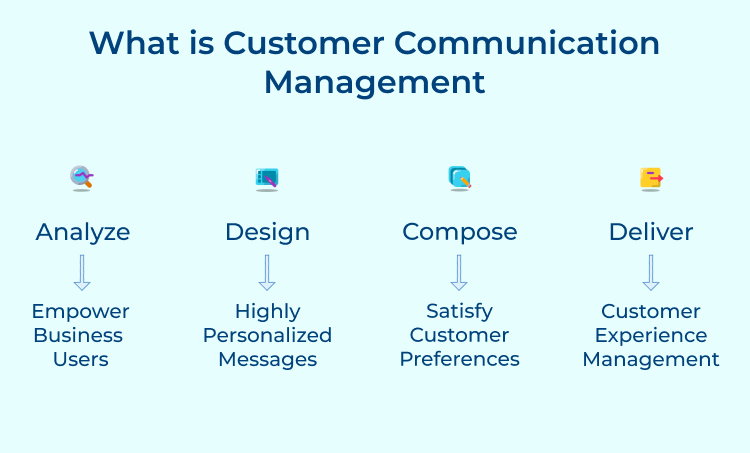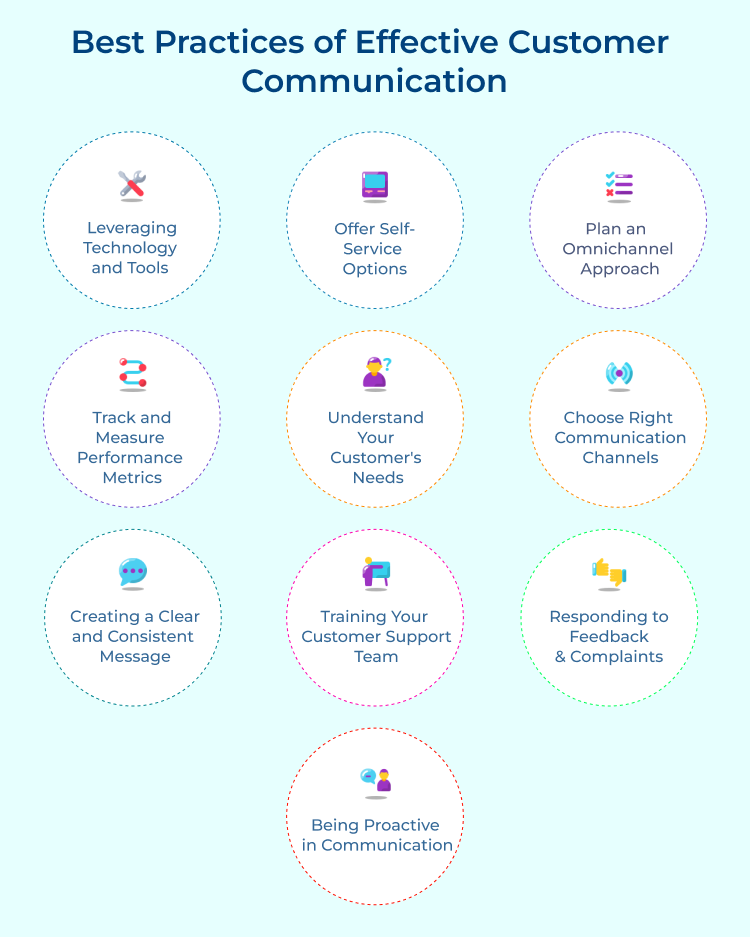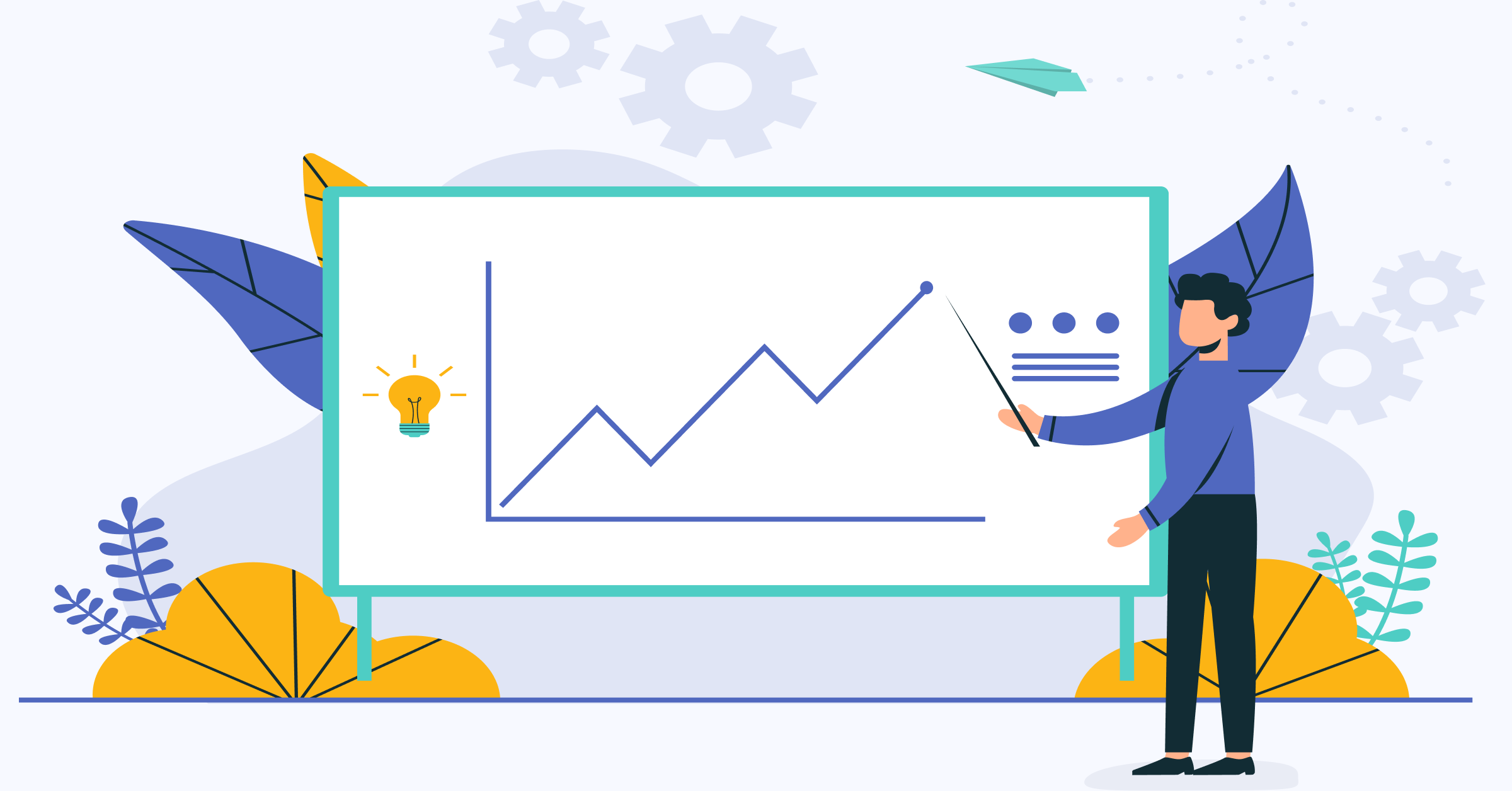1. Leveraging Technology and Tools
The customer service communication strategy of your business depends upon the support tools you implement to connect with your customers.
62% of companies view customer experience delivered by a brand as a competitive differentiator.
Leveraging the right technology and tools to enable personalized customer interactions and provide a seamless experience across all touchpoints is key to effective customer communication.
It can include using tools such as CRM systems, automated processes and omnichannel communication platforms.
Best Practices:
- Utilize automation processes where possible.
- Invest in integrated platforms which allow seamless customer journey tracking.
- Personalize customer experiences using artificial intelligence technologies.
Read more: Learn more about different customer communication tools and technology.
2. Offer Self-Service Options
Customers want to solve their problems on their own, and that’s why customer self-service options matter.
40% of consumers now prefer self-service over human contact.
Offering self-service options allows customers to have direct access to services or information they need without having to wait or contact support teams and prevents companies from being bogged down with repetitive tasks from customers seeking answers quickly.
Best Practices:
- Implement interactive chatbots for answering common queries quickly & accurately.
- Create a comprehensive knowledge base of commonly asked questions that customers can refer to for informational purposes.
- Allow customers to control their preferences by offering personalization options within their accounts page on your website/app.
3. Plan an Omnichannel Approach
Businesses that adopt an omnichannel customer service strategy retain an average of 89% of customers compared with 33% for those with weak omnichannel strategies.
An omnichannel approach allows a more unified view of customers regardless of where they are engaging with you, enabling a more clear conversation between them and your business – creating positive experiences and enhancing engagement metrics at scale.
Sephora builds an omni-channel experience that connects its shoppers’ online purchases to their in-store visits. It allowed customers to use in-store tablets to access their Beauty Bag account while shopping.
Best Practices:
- Prioritize establishing uniformity across all channels (web, social media, email etc.)
- Incorporate advanced analytics technology backed by AI functionality in order to create hyper-personalizing multi-step campaigns across various channels simultaneously.
- Make it easy for customers to move information easily between different channels while pursuing the same purpose without having to start over at every new channel they enter into
4. Track and measure performance metrics
Tracking performance metrics allow businesses data-driven insights into how well their customer communications strategies performed in terms of ROI (return on investment).
It helps inform decisions about what works for their target audience better than others as well as take corrective measures wherever needed, ultimately leading to up- wise decision-making process that helps reach business targets consistently.
Best Practices:
- Collect relevant data on interaction checkpoints at each stage of the customer journey.
- Log emerging trends from gathered datasets from campaign-centered metrics such as the revenue generated, leads captured, activations, etc.
- Consolidate data collected into informative reports which give a comprehensive look into how each campaign is performing so you can track its efficacy over time
5. Understanding Your Customer’s Needs and Expectations
It is very important Taking the time to truly understand what your customers’ needs and expectations are will allow you to deliver a product or service that is tailored to their unique preferences.
Best Practices:
- Get in touch with customers also ask them about their preferences directly, or research industry trends and customer feedback to gain insight into what they need.
- Focus on listening intently
- Use surveys for valuable customer insights
- Gain an understanding of industry trends
6. Choosing the Right Communication Channels
Knowing which channels will be most effective when it comes to communication is key, as each channel should be used strategically depending on various factors like geography, age group, etc.
Consider the various types of communication channels available such as email, SMS, live chat, surveys, forums & social media before jumping into any decisions.
Best Practices:
- Analyze available channels & select wisely
- Explore channel usage leads & trends
- Pay attention to demographics while selecting channels
7. Creating a Clear and Consistent Message
Crafting messages that will resonate with customers is only possible if there is clarity in how you communicate your message.
Being able to create consistent messaging helps brands foster trust among their audience. Put thought into making sure your message is cohesive when communicating both internally within an organization and externally via marketing campaigns or customer service engagements.
Best Practices:
- Keep alignment throughout communication messages
- Use concise language that resonates with customers
- Ensure the tone used on each platform remains consistent
8. Training Your Customer Support Team
One of the most important pieces of effective customer communication is having an experienced, trained team composed of customer service experts dedicated to helping customers quickly and efficiently.
It is essential that team members understand the company’s products or services, how to handle customer issues and can be patient when troubleshooting problems or navigating difficult conversations.
Best Practices:
- Train your team in customer service best practices
- Ensure team members understand the company’s products/services
- Teach team members how to handle customer issues
9. Responding to Feedback and Complaints
52% of people around the globe believe that companies need to take action on feedback provided by their customers.
Customers want to feel heard and understood, so it is essential for businesses to respond promptly when customers try to communicate with them.
It includes responding to feedback (both positive or negative) and addressing any complaints that arise from dissatisfied customers or unexpectedly long wait times. Companies should strive to find a balance between providing excellent customer service and maintaining a good work-life balance.
Best Practices:
- Respond promptly as possible
- Balance customer service & work-life balance
- Utilize listening skills & empathy
10. Being Proactive in Communication
Being proactive with communication can be a great way to create a personal connection with customers and stand out from competitors. It could include sending out welcome and onboarding emails, personalized thank you notes after purchases, follow-ups via email or phone calls after orders are shipped, or automated messages based on key indicators like customer behaviors.
Additionally, companies should make sure all stakeholders are aligned with messaging policies across all platforms including social media in order to provide consistent experiences across the board for their consumer base.
Best Practices:
- Send welcome & onboarding emails/messages
- Utilize automated messages based on key activities
- Be aligned with messaging policies on all platforms
11. Using Positive Language
Positive language sends an empowering message and can help create an environment for effective communication. It always makes the listener feel good. They feel heard, helped, and justified.
The positive language leaves a conversation open for more interaction, whereas negative language quickly shuts it down. The use of words such as “we” or “let’s try this next time” demonstrates optimism, acceptance, and collaboration.
Best Practices:
- Try to use encouraging phrases like “Together we can solve this issue”
- Use positive reinforcement to set expectations
- Avoid blame-shifting by taking ownership of your actions
12. Listening Actively to Your Customers
Listening is probably one of the most essential skills in any successful customer relationship. Communication is not only about speaking, but it’s also about listening and understanding what the customer wants or needs.
People just want to be listened to. And customers do notice — nearly 50% of customers believe companies act empathy when delivering customer service.
Actively listening is an effective customer communication best practice because it is very important that you understand what your customer is saying. For this, you have to listen, and listen actively.
Best Practices:
- Be attentive and actively listen
- Ask thoughtful questions in order to get more information
- Response quickly while keeping the conversation courteous
Elevate Omnichannel CX with Right Customer Communication Management Tips
It’s clear that customer communication management is essential for elevating and supporting omnichannel customer experience (CX). By utilizing the right customer communication management tips, organizations can easily facilitate omnichannel experiences that increase engagement and drive improved CX.
To achieve pervasive CX transformation at scale, companies need to adopt automated strategies and technology-backed solutions that optimize every touchpoint across multiple channels. With these tips in mind, organizations can effectively elevate their omnichannel CX initiatives and deliver superb experiences to all customers, no matter what channel they prefer.







